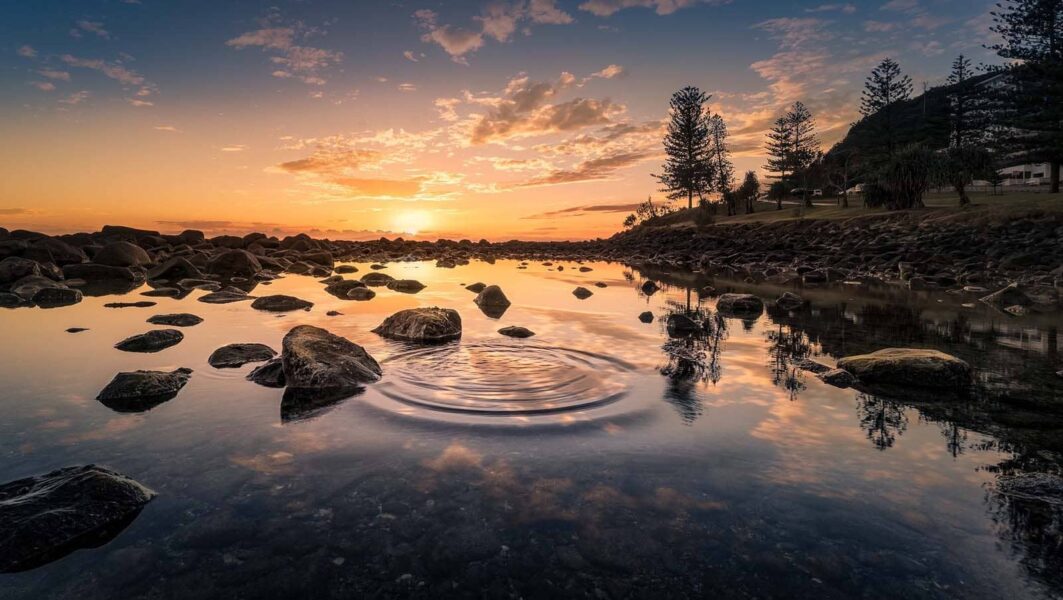In today’s article, we’ll talk about why water is important and how to purify it in case of an emergency. Everyone knows that water is essential for your health and survival, but not everybody knows why.
Why Is Clean Water So Important?
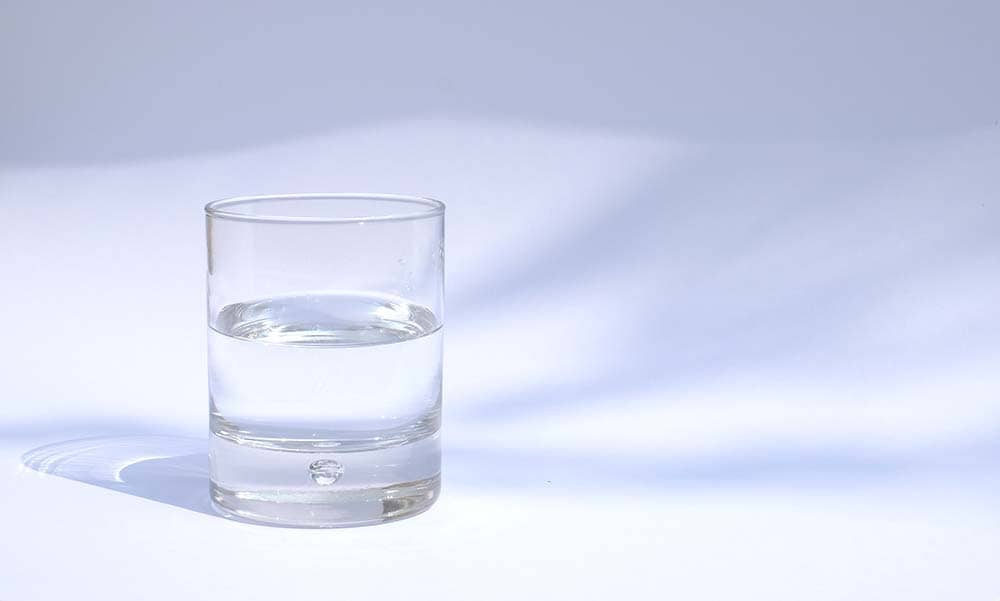
Water makes up most of our body’s weight, and it is involved in many vital functions, such as regulating body temperature and proper brain function. You get most of your water from drinking beverages, but food contributes to your daily intake as well. Water can help improve your well-being, and there are endless reasons why you should drink enough water.
1. Keeps Your Body Healthy
For example, it helps create saliva, essential for breaking down solid food and keeping your mouth healthy. It also protects your tissues, spinal cord, and joints and helps lubricate and cushion them.
2. It Regulates Your Temperature
Sweat regulates body temperature, and that’s why you need water to replenish the lost fluid from it. Drinking plenty of liquids during physical activity is also essential since hydration affects your strength, power, and endurance, especially since extreme dehydration can cause seizures and even death.
3. Water Carries Nutrients And Oxygen Through Your Body
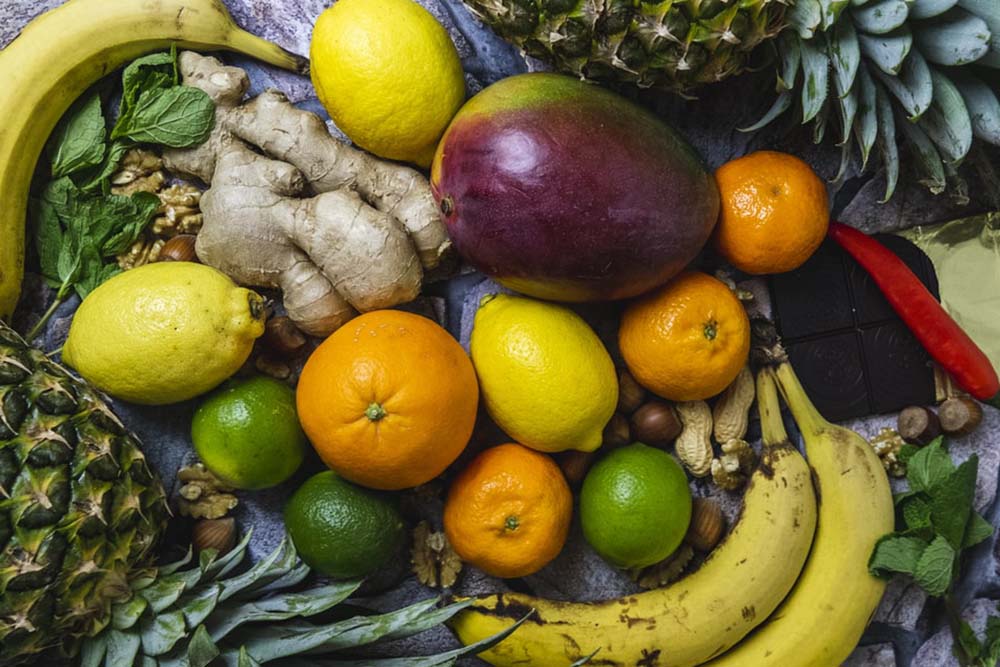
Water carries helpful nutrients and oxygen to your entire body, which improves blood circulation as well. Even some medical conditions can be prevented if you consume enough liquids, not only that, but you’ll boost your energy and improve your mood.
We hope all these reasons were enough for you to understand the importance of water because it will help you maintain your overall health. Now that we’ve discussed the water’s purposes, it’s time to talk about what happens if you find yourself in the great outdoors without a clean water source. If you continue reading this article, we’ll try to explain different ways to purify water and answer all necessary questions to survive if a natural disaster occurs or if you find yourself in a difficult situation.
How Do You Purify Drinking Water In An Emergency?
In case of an emergency, one of your top survival priorities should be to find and purify enough water to supply yourself, your family, and your friends. No matter the circumstances, the human body can’t last more than three days without liquids. The good news is that there are many options to purify water that’s not safe, so you can drink it.
1. Boiling
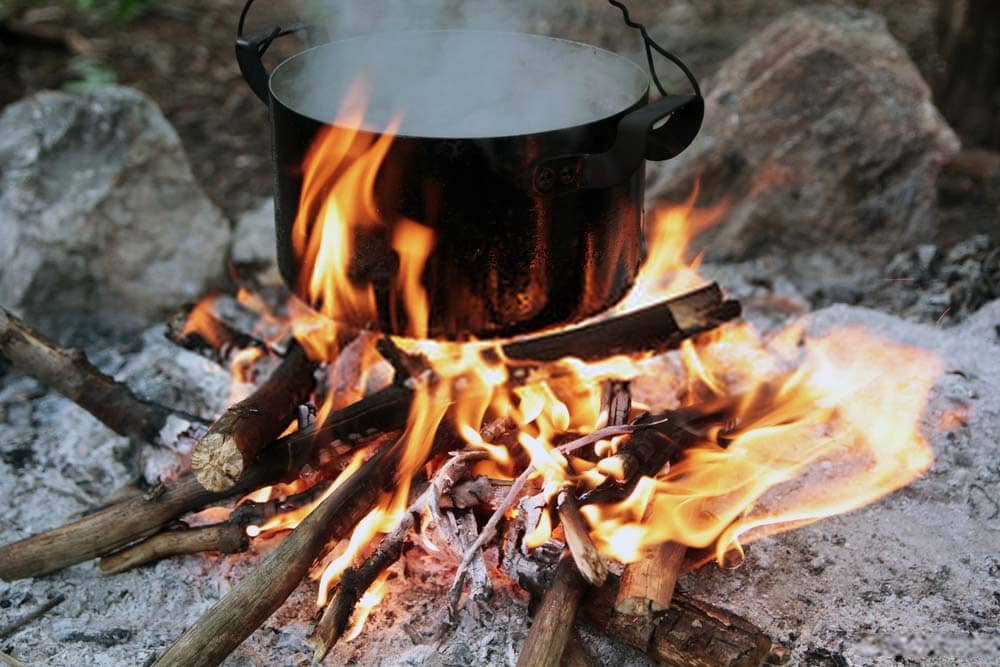
The most popular and one of the most reliable options is to boil it. Even though boiling water might not evaporate all forms of bacteria, it’s still one of the safest ways to disinfect it. In a scenario where the only water available is dangerous water, one of the secure options is to distillate it. Heating water to purify it will only be possible if you have a way to do so, if not, this suggestion won’t be beneficial. But the good news is that this isn’t your only option to make the liquid safe to consume.
How long do you boil water to purify it?
Usually, one minute of water boiling will be enough to ensure that all waterborne pathogens have been killed.
However, if you find yourself at an altitude above 5,000 feet, you should let it boil for at least three minutes. After that, all you have to do is let it cool down naturally and store it in clean containers with covers.
2. Survival Straws
Another great alternative for purifying water is survival straws. They are compact and easy to carry wherever you’re going, and they contain carbon filters, which will eliminate most bacteria, pathogens, weird flavors, and unpleasant smells.
3. Disinfecting tablets
Disinfecting tablets are also a common water disinfectant, but the issue with them might be that they can’t clean a lot of water if you don’t have many tablets.
4. Store Bought Filters
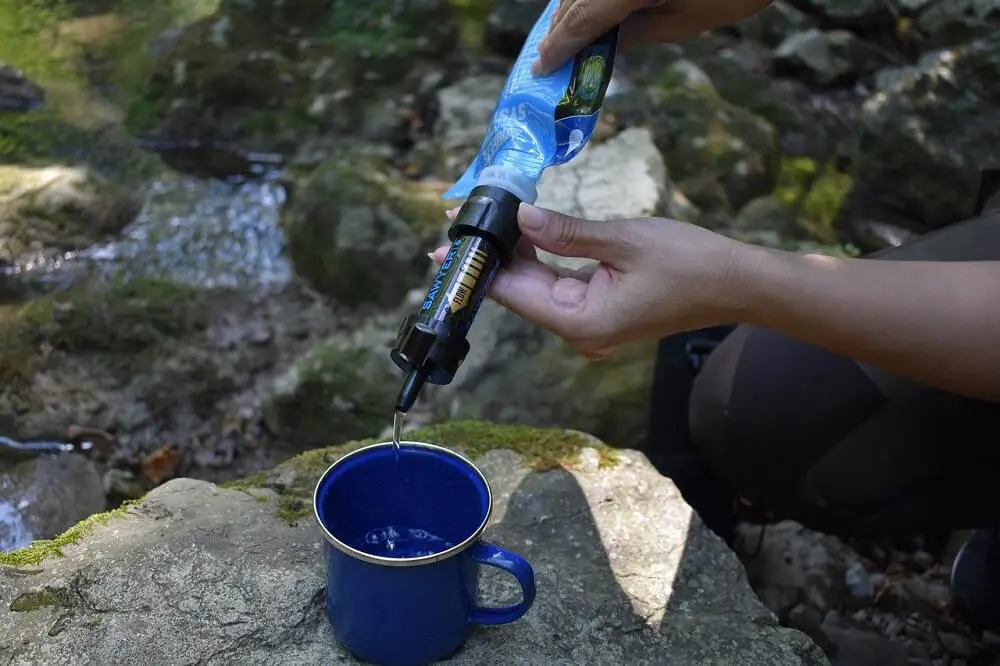
Your other store-bought option filters. Surviving in the wild can be harsh and dangerous, and the last thing you want is to end up with no way to get clean water and get sick from a contaminated source. That’s why you need a water filter, and the most important features to look for in one are its capacity, size, weight, effectiveness, and usability.
5. Ultraviolet Light
Solar water disinfection is another possibility you can use when you need to find yourself clean water. The most popular technique is to expose plastic water bottles to the sun for one or two days. What that will do is kill almost all biological hazards in the water with the sun’s UV lights. This can be a straightforward option that doesn’t require any filters or chemicals, but if you need clean water straight away, you should probably choose one of the other alternatives.
6. Household Chemicals – Bleach
We don’t recommend this solution for an extended period of time since these options are still chemicals, and even though pure bleach gets rid of a lot of impurities in water, they are no joke.
When using bleach to purify water, only use unscented chlorine bleach products. Under no circumstances should you use scented, color safe, or bleaches with added cleaners.
How to purify water with bleach?
First, find yourself a clean dropper from your survival or first-aid kit, and after that, find a container for the water. Put the bleach inside, stir it and leave it for about 30 minutes. To make sure that the water is safe to drink, smell it, and if the chlorine odor is too strong, we recommend repeating the process one more time. After that, you can taste it, and if the chlorine flavor is too heavy, pour the water from one clean container to another a few times.
How much bleach to purify water?
If the water looks clean, you will need 6 to 8 drops per gallon, but if the liquid looks cloudy or colored, you should double the dosage. Using room temperature bleach will be best if possible.
7. Household Chemicals – Iodine
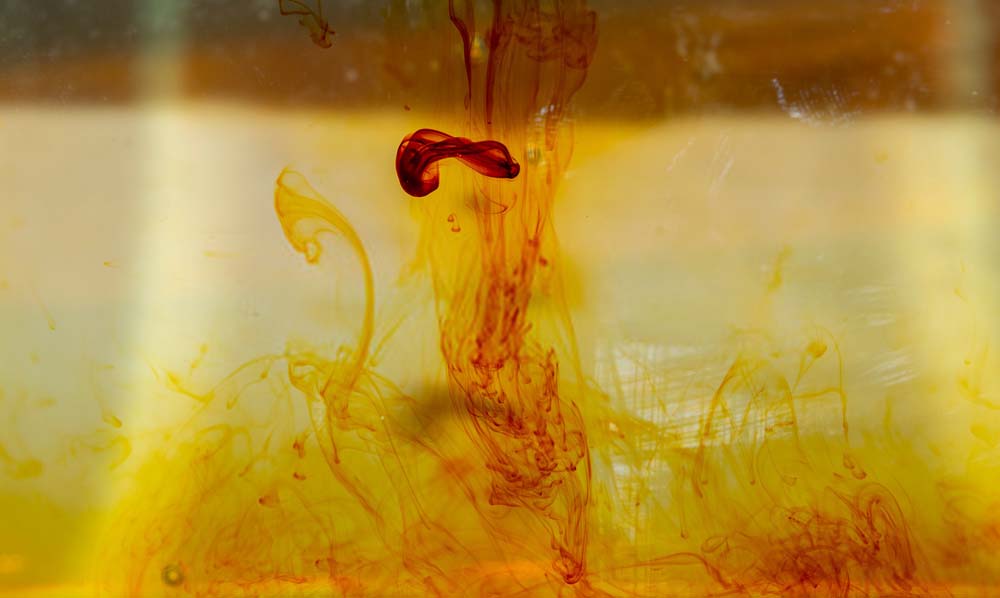
Just like bleach, iodine can be added to water in order to kill off bacteria and living contaminants. The biggest advantage that comes from purifying water with iodine is the fact that it has an infinite shelf life.
This means that in case of an emergency, you’ll always be able to purify water. Remember that iodine is more expensive than bleach, and it takes double the quantity to filter water.
8. Hydrogen Peroxide
Hydrogen Peroxide can be used for water purification in emergencies or disaster situations. This option won’t have possible harmful effects when using bleach to purify water.
Used in our households for years, this product eliminates bacteria and chemicals and reintroduces oxygen to create safer drinking water. The recommended dosage is adding 1/8 c of hydrogen peroxide to a gallon of water.
9. Make a solar still
Solar stills have been used since the 16th century. In order to make a solar still, you will need a lot of sun. First, grab a wide bowl with a flat bottom, and into its center, put a glass, which shouldn’t be taller than the vessel.
After that, it’s time to fill the bowl with water without allowing liquid to get inside the glass. All that’s left for you is to put a plastic wrap and some weight on top and bring the whole thing out in the sun. Eventually, the weight will pull those water droplets along with the plastic and find its way to the cup, making it safe to drink.
10. Tap into transpiration
Another way to filter water is during transpiration. That works with water being absorbed in the ground by plant roots, which later on travels through the stems before being released from the plant’s leaves. Most survivalists can easily use this method by trapping water before it evaporates into the air.
To be able to purify water this way, you will need a plastic bag that you have to place over the leaves of a plant and tie it. On the next day, you’ll find water gathered at the bottom of the bag. Warning, this shouldn’t be done with unknown or poisonous plants.
11. Make a simple filtration system
So many things in nature can be used to create water filters that will eliminate bacteria and chemicals, such as gravel, rocks, sand, charcoal, grass, etc. However, this method isn’t recommended if you aren’t in an emergency. If you have a small drill in your survival kit and a large container as a bucket, this might be the option you try. Simply make some holes in the bottom of the container and then start layering.
First, you need pebbles, after that is sand, followed by some cloth, some charcoal, more cloth, and more sand and rocks. If you don’t have a bucket available, any other container will do, even a water bottle. After that, it’s time to put a bigger vessel underneath the bucket and pour the water. When the water ends up in the bigger container, you should pour it back in a few more times, and then voila!
12. Sand filtration
With the appropriate supplies, you can make your own sand filter. For that method, you will need sand, small pebbles, charcoal, and a container, which in most cases, will be a water bottle. Your sand and charcoal need to be as fine as possible, get some pieces of charcoal from the pit on your campsite, and smash them with a heavy object.
After that, it’s time to cut off the bottom of the water bottle and put a cloth at the top and close it with the cap. Start pouring the charcoal first from the hole you’ve cut out. In the middle, you’ll have the sand, and last you’ll need the pebbles. Pour the water into your handmade filter and let it get through all the materials. All that’s left after is sterilizing it by boiling it or leaving it in the sun for 24 hours.
13. Water bottle filters
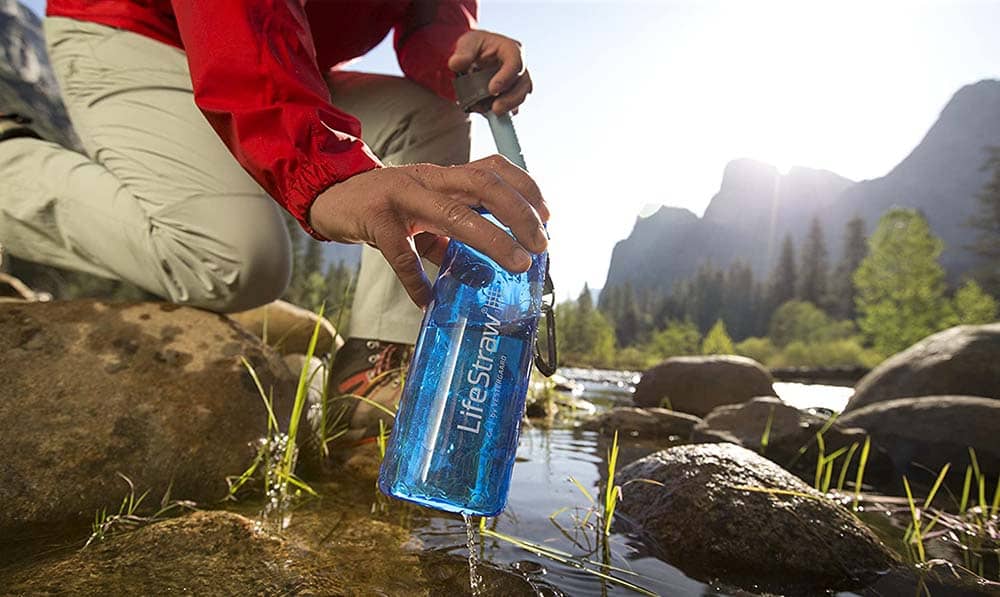
Water bottle filters have a built-in filtration system, just like survival straws, making them a very convenient and portable purification method. In today’s market, you will find numerous available options, which will vary both in price and effectiveness, that’s why it’s essential to research the possibilities.
14. Activated charcoal filters
Activated charcoal can filter out a wide range of contaminants and bacteria from unsafe water. When we’re talking about activated charcoal, you have two possible options.
You can either purchase an activated carbon filter pump, which is portable and compact and can fit in your backpack, or make yourself a filter. Creating this filter works just like the sand filtration system, with one difference only.
That difference is that in this situation, we will use store-bought activated charcoal since it burns at a very high temperature, and the one from our campsite won’t do the job.
15. Stone boiling
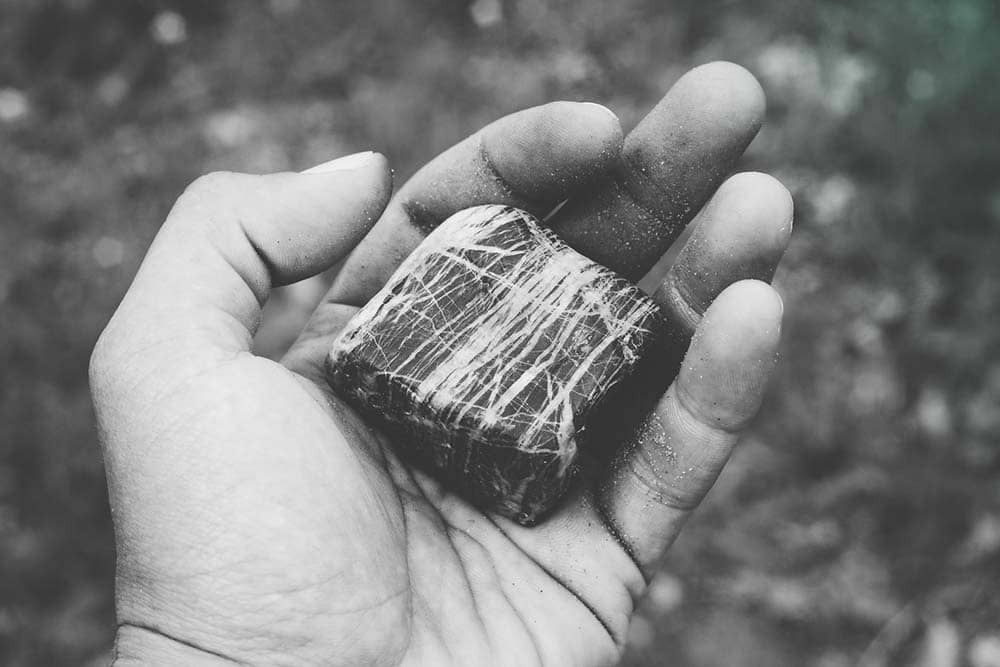
Sometimes you might end up in the wilderness without a fireproof container where you can boil your water, which is why this method might be an excellent option for you. This method is called stone boiling, and what it does is heat up a stone until it turns red, and you have to place it in the water.
You have to repeat this process until the water starts boiling and let it boil for at least a minute. That way, you boil water without having to place it directly over a heat source.
16. T-Shirt filtration
This method should be one of the last resort options since it doesn’t really get rid of contaminants and bacteria as much as other methods. But if there aren’t any other available options, you can pass water through your t-shirt or shirt to remove at least some of the sediments and deposits in the water. We strongly recommend that you pass the water more than a few times and only drink it as a last resort.
17. Xylem filter
This is a straightforward method. However, you should remember that this filter is very slow, and if you need water right away, one of the other options might be better. The Xylem filter is one of the most promising methods to purify water.
All you need is a chunk of pine, a piece of flexible tubing, and some glue. Fix the pine at one of the tube’s ends and glue them together so it doesn’t leak water. Use the other end to fill it with water, wait till it runs through the pine, and you’ll end up removing 99.9% of contaminants.
18. Use a grass-gravel-charcoal filter
For this method, you will need grass, sand, charcoal, a cloth, and a water bottle. Start by placing a cloth at the bottom, covering it all. Next will be the grass, which you need to cram well.
After that, it’s time to place the sand or grovel (whichever you have around) and lastly, grab some charcoal from your campsite and pack it in. Repeat the process two or three times to ensure the safety of your water.
19. Ground to filter water
That water purification method is suitable in case of an emergency, but it will take a lot of time and hard work. When you find a water source, you need to start digging next to it (2 ft. will be a reasonable distance) and continue digging until you hit the water. The deeper the digging, the better quality water you’ll end up with.
20. Alexapure Pro Water Filtration System
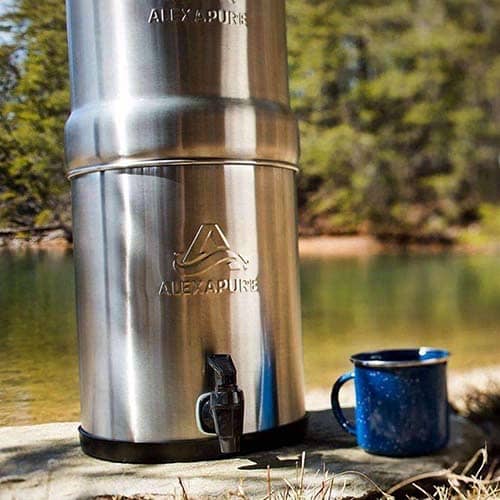
This system is designed to last for years, which is why it is a great investment. As one of the best gravity-powered filtration systems, Alexapure works by pouring water on the top of the unit, where carbon filters remove the microscopic contaminants. The larger contaminants are blocked by a ceramic shell, which also prevents the growth of bacteria.
This is more of a prepping/just-in-case scenario over a wilderness survival skill, but we still think it is worth mentioning, mostly because of how well the system works and it is designed over anything else.
21. Non-Chemical Stabilized Oxygen
As one of the easiest and quickest ways to filter water, this method is suitable for survival kits in emergencies or natural disasters. All you have to do is drop some Stabilized Oxygen in your water, and you will be provided with a clean source immediately. This product can be purchased in stores with labeled instructions.
22. Distillation
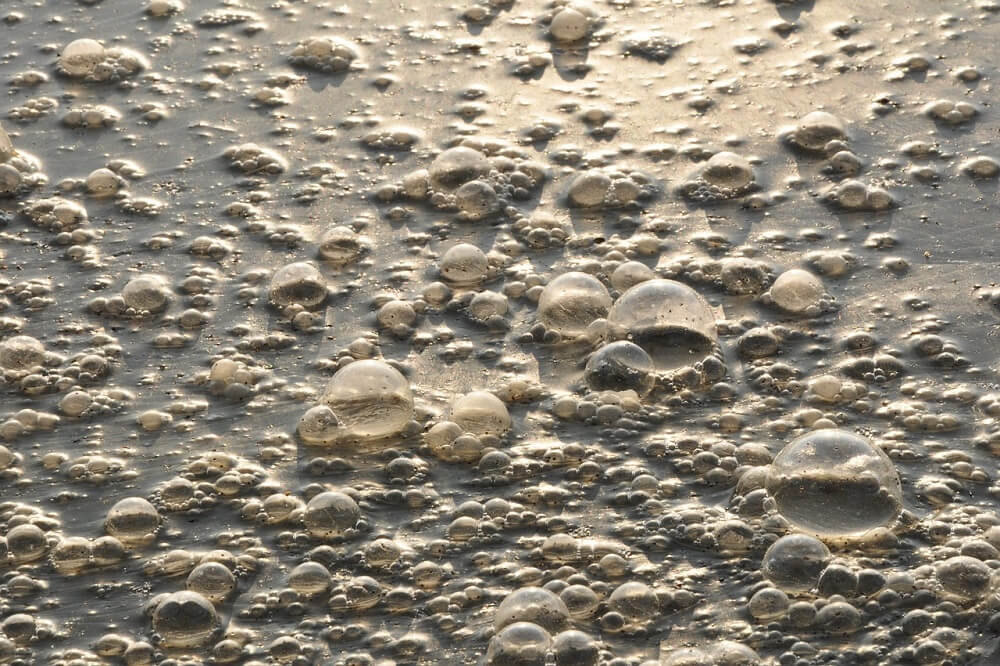
In a scenario where the only water available is dangerous water, one of the secure options is to distillate it. You need to grab a small container and put it on top of a bigger one, which has to have some salt inside. All that’s left is to cover the whole thing and allow condensation to do its job.
This is an efficient method of procuring safe drinking water that removes salts and minerals. Heating water to purify it will only be possible if you have a way to do so. If not, this suggestion won’t be beneficial. But the good news is that this isn’t your only option to make the liquid safe to consume.
Can you purify seawater to drink?
Humans can’t straight up drink seawater because it’s full of salt, which generally dehydrates the human body, and that’s never a good thing when you find yourself in an emergency. The best and pretty much only way to make seawater safe to drink is by distillation since it will remove the dissolved minerals.
23. Purification pumps
Purification pumps are portable and easily accessible. These products have a built-in pump that cleans the water and drops it into the bottle once you’ve poured it down.
Usually, the filter inside those pups is either charcoal or ceramic. If you don’t mind spending a few extra dollars, you can get yourself a water bottle with a purification pump to make your experience much more straightforward.
24. Natural chemicals
What we mean by that is to take advantage of everything Mother Nature offers and find a plant with antimicrobial properties. Cut off its root and chew it before and after you drink unsafe water. One of the best plants for this method is berberine since it kills many germs.
25. Ceramic filters
Ceramic filters are quite effective in removing contaminants from water.
This is a method that has been used for many years, but if you end up in an area where there is a possibility of pesticides and organic pollutants in the water, using a carbon filter, you be better.
26. Sedimentation
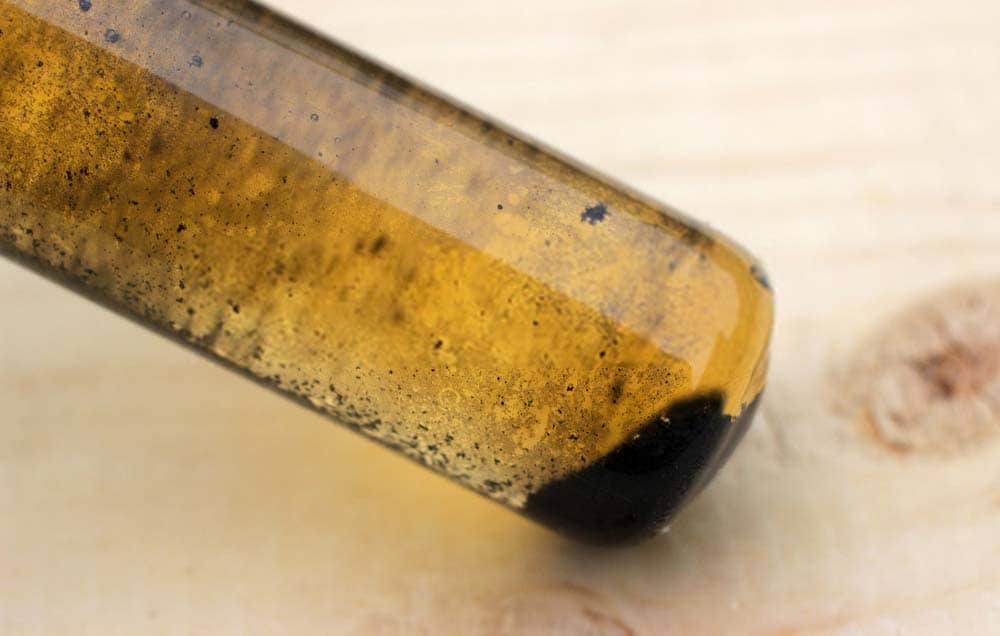
Even if the water source you find is dirty, this simple method will turn out very helpful in providing a bit of clean water when you need it. Find yourself a bucket or another container that you can fill with water and then let it sit for a minimum of two days, so all the contaminants drop to the bottom of the bucket.
After the time has passed, grab a smaller container and transfer the water into a clean bucket by carefully avoiding the bottom and all the dirt that has gathered there. After that, you might want to use a sand filter or a charcoal one to make sure that the water is safe for drinking.
Where can you find drinkable water in the wild?
You never know what can happen in the outdoors, and if you ever find yourself without water in the wilderness, there are a few ways to find a water source. If you see a stream, river, or lake, you’ve hit the jackpot, but if you aren’t near a water source for some reason, many things can help you find one.
1. Follow Wildlife Trails

Animals know where you can find water, so you should totally lookout for wildlife and even animal tracks. Keep one thing in mind some animals might be dangerous, so stay at a safe distance when following them.
2. Look For Insect Swarms
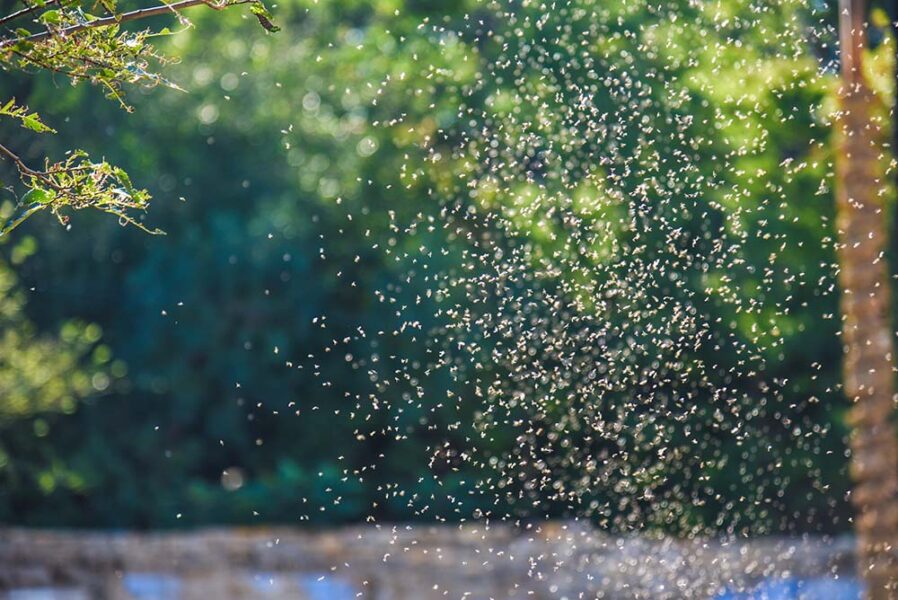
Another thing that might be helpful is looking around for swarming insects since they won’t be far away from a water source. If you see a lot of green vegetation, there’s water nearby.
3. Trust Your Senses
Sometimes the simplest things can give you the answer you need, what we mean by that is using your senses to provide for yourself. Most of the time, being in nature means quiet, which can be very useful for you. All you have to do is listen carefully because, most times, you can hear rivers from afar.
4. Look For Low Ground
Another good bet is valleys, and low-lying areas since water always flows downhill. The best advice we can give you is that if you end up in a difficult situation, trust yourself, and your survival instincts will prevail.
Water In The Wild – Frequently Asked Questions
Let’s take a look at the most commonly asked questions and their answers about finding clean water in the wild:
1. How can you tell if water is clean and safe to drink in the wild?
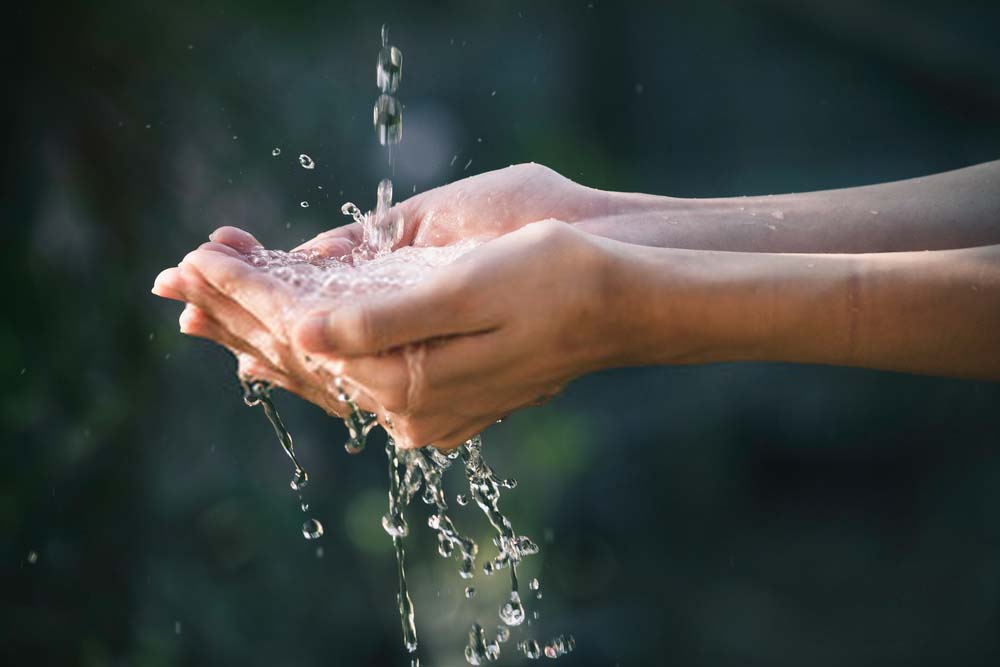
You can’t tell straight away, at least not by looking at it, but since you don’t have a microscope to see the bacteria, you should assume that every water source in the wild is not clean/safe to drink. To make sure that you have clean water, use one of the methods above to purify it and make sure it is safe to consume. However, if you find yourself with any way to filter or purify water but you still need to drink some liquids, you can at least consider a few things.
Look For Clear Water
Water safe to drink should typically be clear with no weird odor or funny taste. One way you can tell if the water is contaminated is to look for cloudiness or turbidity. While cloudy water doesn’t have to be dangerous for your health, it could carry many unsafe chemicals and pathogens.
Yellow, orange, or brown water is never a good sign for drinkable water. For example, orange and brown water signal that the liquid contains lead, manganese, excess iron, or even rust, which means bacteria. Yellow water is quite dangerous as well because it can signify the presence of chromium six, which is a chemical that causes cancer. It can also mean the water consists of copper or lead. Water tinged with blue or green could contain elevated levels of copper. Even though these water colors are not usually seen, high levels of exposure can produce health problems and cause liver and kidney damage.
Beware Of Strong Smells
If your water smells like rotten eggs, it could contain hydrogen sulfide, which can cause dehydration or diarrhea. Another suspicious smell to be wary of is a fishy one because it could be a sign of barium or cadmium, and that could cause increased muscle weakness and bone or heart damage. Several contaminants, including arsenic and nitrates, are hidden from the naked eye, so it’s never safe to assume that water is safe to drink only by looking at it. The best advice we can give you on that subject is to find a way to purify water, even if it means creating a DIY filter.
2. How do you purify water in the wild without a fire?
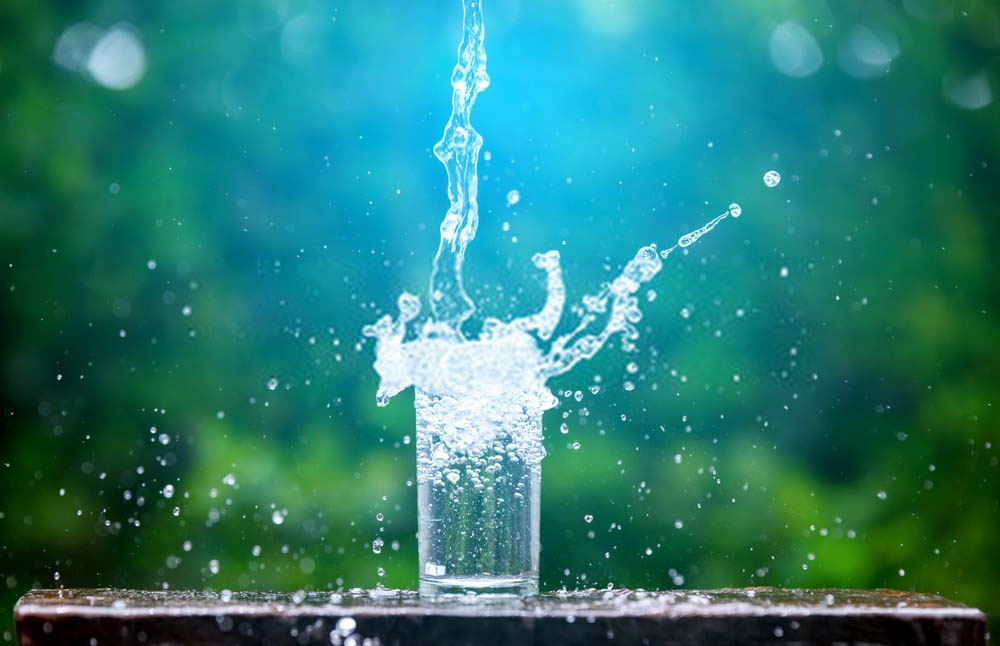
As we’ve said before in the previous answers, there are so many options to purify water, and you can read all about them in the article above. Now we’ll do something different and teach you how to build your own filter and prevail water by yourself. And just so you know, we don’t mean the charcoal one since it’s not the most reliable option out there, considering it will only clear out larger impurities.
However, if you’re looking for a trustworthy alternative that will actually purify water, you’re at the right place. All you need is three simple items, which are glue, a hose, and a piece of pine sapwood. The pine’s structure already performs filtering actions in the living wood, so why can’t it work for us as well? What you have to do is grab your chunk of wood and fasten it to the flexible hose, then glue it together.
Since this is a handmade filter, it might not remove 100% of all bacteria, but it will be reliable enough for you to drink it if you don’t have other options. Nature has learned to take care of herself, so it might do the same for you with this easy-to-make filtration system that can save your life.
3. Can you drink rainwater to survive?
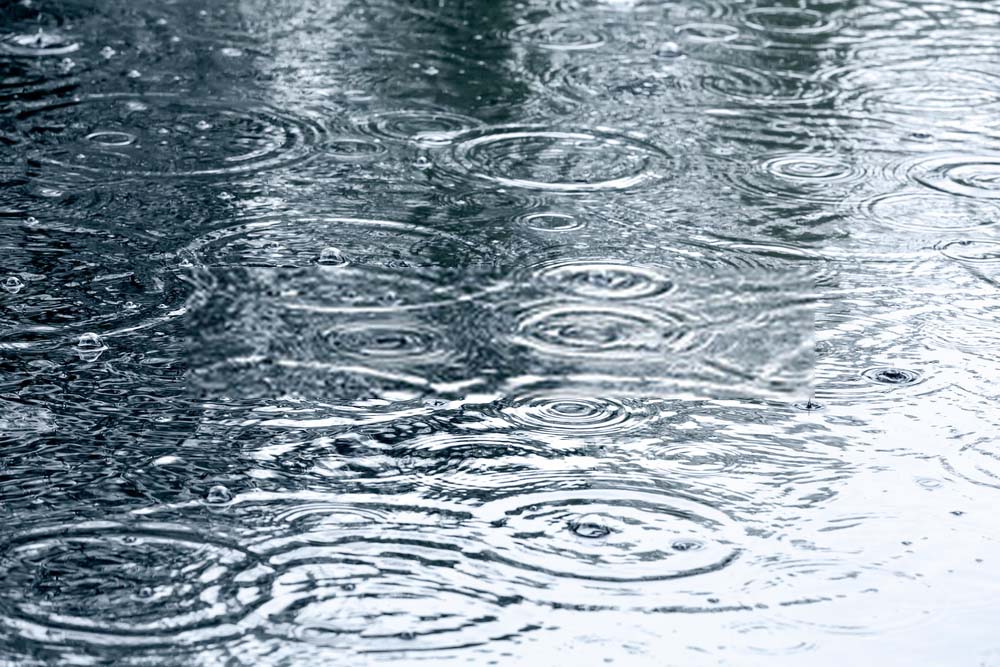
Everyone has thought about drinking rain at some point, but does that mean it’s safe to do so to survive? The answer isn’t very clear, so we’ll try and explain when this is a possibility and when drinking rainwater isn’t safe for human consumption.
Most times, rainwater is completely safe to drink, sometimes, it can be cleaner than the public water supply. Remember that you should consume rainwater only if it has fallen directly from the sky because if it touches plants or other objects, its purity might change very fast.
If you have the option to boil the liquid, you should try to make sure it’s safer to drink. You shouldn’t collect water in dirty containers, and most definitely, you shouldn’t consume rain if you’re close to any contaminated sites or near chemical plants.
Rain does pick up low levels of bacteria, but the truth is that it’s the water supply for a considerable part of the world’s population and that by itself says a lot. A big part of rainwater is naturally acidic, but in small amounts, that’s not dangerous.
However, if there ever is truly acidic rain, which can befall close to an active volcano, you should definitely avoid it. You can never be sure what you’re consuming with rainwater, so if you have the option, we strongly advise you to filter it in whatever way possible to make sure the water is safer and that you’ve improved its quality.
4. Can you drink river water if you boil it?
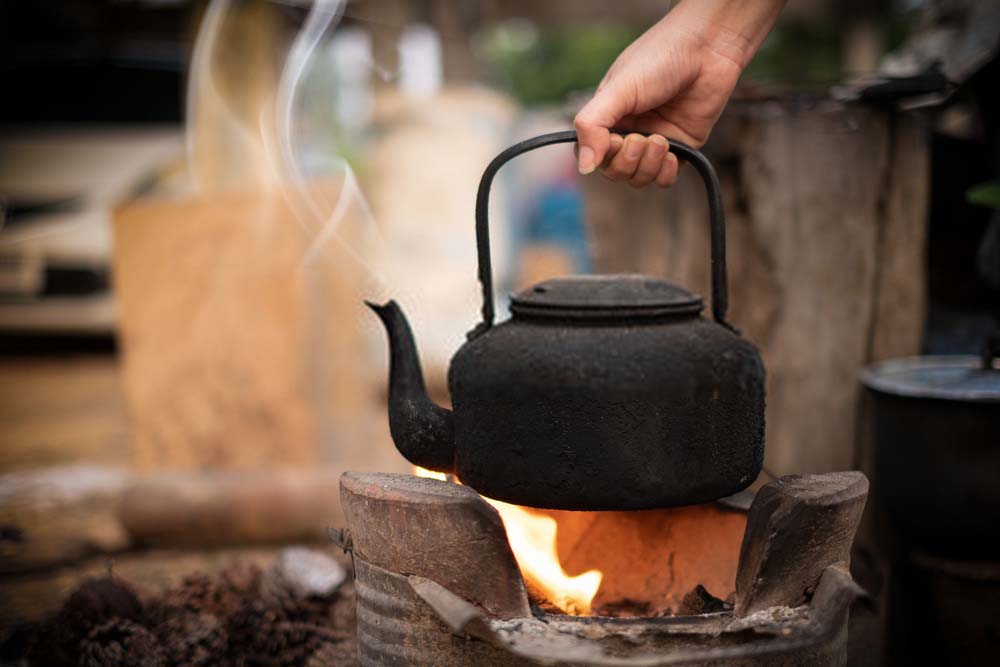
This is a question that every hiker or outdoor enthusiast has thought of at some point in their life because if you go hiking often or go camping, running out of water might have happened to you. Let’s say you’re on a trail, and for some reason, you’ve run out of clean water, you have to find a source to drink out of. In one of the previous questions, we’ve explained how to find a water source and what to look and listen for.
Maybe you got lucky and saw a river nearby, so you didn’t even have to look for one, but the next step is to think if you can actually drink from it and if it is safe. Like most water sources, if you boil them, you’ll kill most pathogens and bacteria and make the water clean enough to be consumed. To do so, you need to have access to a campfire or a stove and a couple of accessories to boil it in. You can never know what pathogens or dissolved metals might be in the water, so it is better to assume that it isn’t safe to drink without treatment.
Final words
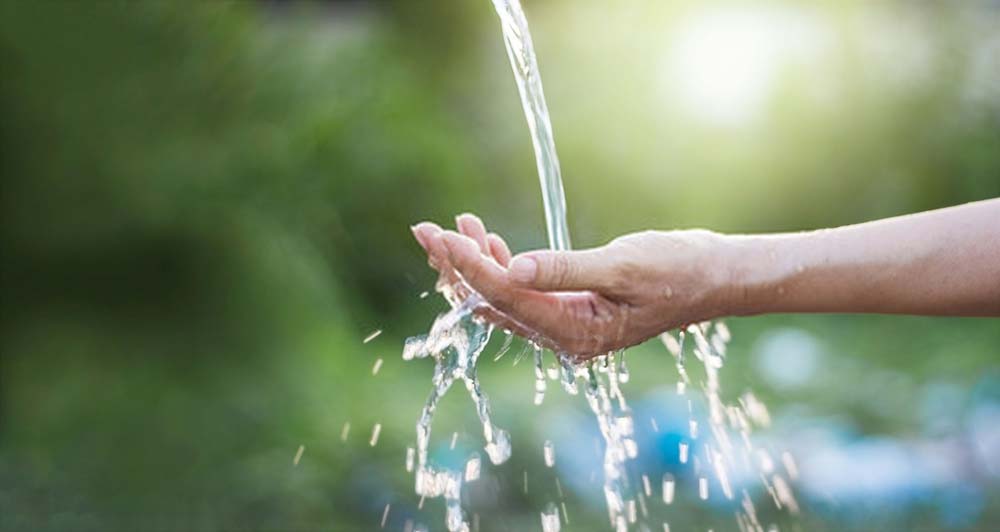
Water is one of the top survival priorities for every living human being. In case of an emergency situation, you need to know how to disinfect enough drinking water to supply your needs and help your family survive. Whether your crisis unfolds in the wilderness or at home after a natural disaster, the human body can’t survive without water for longer than three days. That’s why we should have a way to purify water in case of an emergency.
The good news is that water sources surround the globe and that there are multiple ways to disinfect water. We’ve shown you a few of them, and we would like to hear if you’ve used any of them or, if you haven’t, which one you will try. If any more questions need to be answered about the subject, we would gladly help in the comments below.

